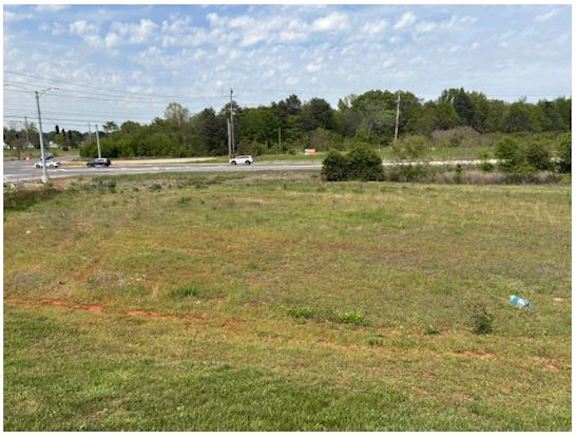Mayor: Road to fixing blighted chicken plant was rocky, smooth
Published 6:24 pm Tuesday, November 28, 2017
A challenge, a little elbow-rubbing and long negotiations helped Athens find a solution to one of its most blighted pieces of property — Pilgrim’s Pride.
The chicken-processing plant off Pryor Street, which once employed 640 people in the area, closed in October 2009. The former plant, located beside Athens State University and near the downtown, had been in production for 57 years. Among the previous owners were Sweet Sue, Beatrice Foods and ConAgra. Pilgrim’s Pride took over in 2003. After the plant closed, it was abandoned and fell into ruin. A change in zoning prevents the site from ever being used as a food-processing plant.
Trending
“When a previous council took office, blighted properties became a priority,” Athens Mayor Ronnie Marks told the City Council during a special meeting Monday.
“Several years ago, me, Harold Wales, Jimmy Gill and I can’t remember who else was on the council in 2010, ’11 and ’12, we made an effort to take care of blighted and abandoned pieces of property all over this town to try to clean up our city,” Marks said. “Between that time and now, we have taken down about 300 unsafe and blighted pieces of property in our community.”
About five years ago, the mayor said, three men — Judge Jimmy Woodroof, Doug Gates and Carl Hunt — took him out to the Pilgrim’s Pride property. They said it was the most blighted piece of property in the community and challenged him to do something with it.
From there, the mayor said, the city began a journey that included a lot of negotiations with Pilgrim’s Pride.
“And let me say, once we ran down who to make the contact with, Pilgrim’s Pride has been very cooperative in their negotiations with us,” Marks said. “ Oftentimes, we didn’t come close to agreeing on a price figure of what they would even consider taking for the property and what we were willing to give, and the process continued.”
He said there is a leadership group in the state called Design Alabama that selected him and several other mayors from North Alabama to come to a conference in 2014.
Trending
“We put together a challenge and an opportunity as to what to do with nearly 32 acres of a blighted and abandoned chicken processing plant,” Marks said. “So, I presented that to the entire group of leadership folks.”
Council members agreed in July to buy the site for $550,000, assuming the environmental study, demolition costs and asbestos removal estimate proves acceptable. But it took some work to get there. Marks said in the process of negotiations with City Attorney Shane Black, City Councilman Joseph Cannon, Councilman Chris Seibert and the rest of the council about what to do with Pilgrim’s Pride, “it went back and forth on rocky roads and smooth roads.” Then, along came the Alabama Department of Environmental Management at a conference city leaders attended, he said.
“ADEM said we are interested in helping your city with this and conducting a Phase 1, which is an above-ground environmental issues at Pilgrim’s Pride,” Marks said. “They also stepped forward and conducted a Phase II (below ground) testing for the city of Athens.”
Meeting ADEM
Marks had told the council at the Nov. 6 meeting that the ADEM Phase II study showed no significant issues at the site. However, some council members wanted to speak to an ADEM official and ask questions about the study. Attending the council’s premeeting work session Monday from ADEM were Sonja Favors, chief of ADEM’s Redevelopment Section, and Dixie Beaty, who was on the ground at the plant site, the mayor said. Favors told the council her section is about bringing life back to blighted areas. She said the Phase II study it performed showed minimal environmental issues. The study is based on soil and groundwater tests drilled this summer at eight sites across the site.
“Our report is a snapshot of what is there,” Favors said. “The samples look good for an industrial site. We were ecstatic with the numbers we saw.” She said the site’s levels could “easily be addressed.”
For example, although the site tested somewhat high in lead and arsenic, she said the entire region of Alabama tests somewhat high in those chemicals. So, rather than the higher readings meaning there is a problem at the site, the readings reflect the high readings in the entire region. She suggested the city cover the areas that will be open for a park or other uses be covered with a foot or two of topsoil to abate any possible issues.
“It’s an open slate for redevelopment,” Favors told the council.
The city hopes to attract a developer that will build mixed use — housing and retail — on the site. However, Marks said if that doesn’t happen the city will just make it a green space.
City inspector Bert Bradford, who sent council members a brief synopsis of the voluminous and technical study for the council, told The News Courier Monday he considered the report “a home run” for the city.
Favor told the council ADEM sampled close to areas where they believed problems might exist, such as a garage where vehicles were repaired. They found no significant pollutants. Of the 350,000 square feet of buildings at the site, 250,000 square feet was used to warehouse products such as cans of chicken. Processing and maintenance were performed, he said, on only a fraction of the site.
Although some chemicals had elevated levels, they require no remediation, he said, noting the city could bar drinking water wells and require sub-floor vapor barriers, which are already required in the building code to abate radon gas in homes.
On Friday, the city will open bids on an asbestos abatement. Council members had already agreed to pay Terrell Technical Services $8,500 to assemble a bid package for asbestos abatement. By Monday, the council should know the cost of the demolition and the land survey. Their deadline to know all costs is Dec. 11, with closing set for Dec. 29.
As Favors said at the work session Monday, the city has what it needs “to make any dream possible” at the site.





